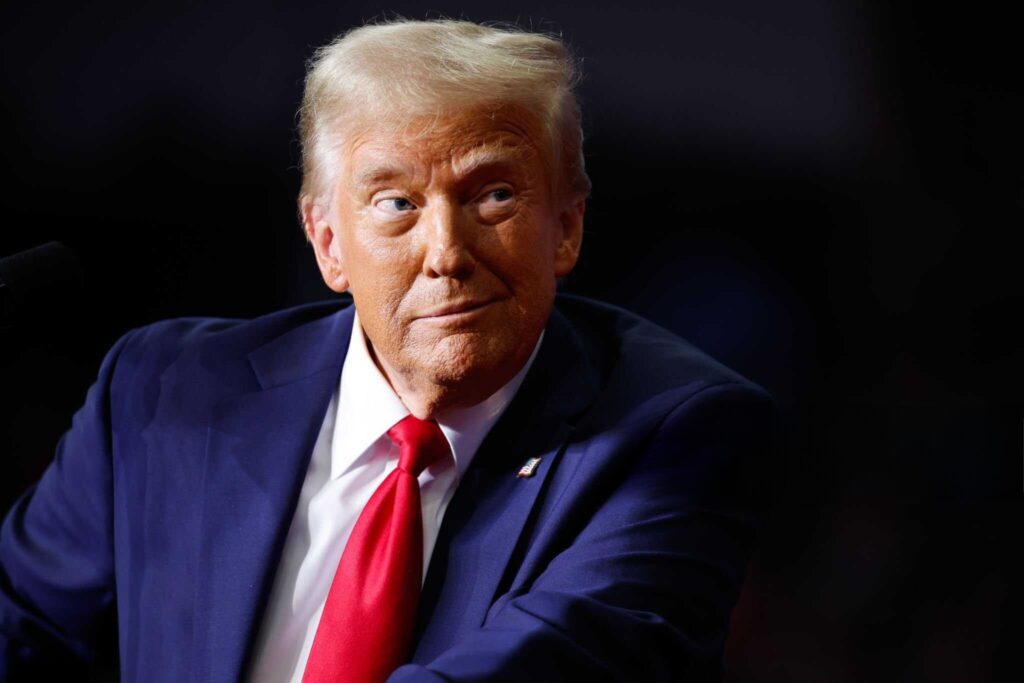President Donald Trump’s announcement of a 25% tariff on steel and aluminium imports has raised significant concerns among trade partners, particularly Canada. As one of the largest suppliers of metals to the US, Canada stands to be heavily impacted by this move. The decision expands existing trade barriers, and despite warnings from key political figures, including those from Canada, Trump remains firm in his stance.
No Exceptions for Canada or Other Countries
The tariffs, which will take effect on March 12, 2025, have been met with a mix of criticism and support. Trump made it clear that there would be no exceptions to the new policy. The president believes that the tariffs will help boost US domestic production of steel and aluminium, arguing that simplifying trade rules will ultimately benefit American industries. When asked about potential price increases, he insisted that in the long run, the move would prove to be cheaper for the US.
Trump also hinted at the possibility of additional tariffs in the future, including on products such as pharmaceuticals and computer chips. This expansion of tariffs marks a continuation of his “America First” trade agenda, which has frequently put the US at odds with its major trading partners.
Canada’s Role in US Metal Imports
Canada has long been the largest supplier of aluminium to the US, providing over half of the total aluminium imports last year. As a key partner, Canada is now facing substantial economic repercussions from the new tariffs. Officials in Canada have strongly criticized the move, calling it “unjustified.” Francois-Philippe Champagne, Canada’s Innovation Minister, emphasized how crucial Canadian metals are to vital US industries, including defense and automotive sectors. He warned that this could strain the strong economic relationship between the two countries.
Kody Blois, a member of Canada’s governing Liberal Party, echoed these concerns and suggested that the Canadian government should look for ways to reduce trade dependence on the US. “This is upending what was a strong partnership,” Blois told BBC Newshour. The proposed tariffs have raised questions about the future of US-Canada trade relations.
US Steelmakers Benefit from Tariffs
While the tariffs have been controversial in Canada, they have been well-received by US steelmakers. Cleveland-Cliffs, a major US steel producer, saw its stock surge nearly 20% on the news. The announcement has caused steel and aluminium prices to rise, benefiting US producers but potentially driving up costs for other industries reliant on imported metals. Conversely, the Canadian dollar and Mexican peso have dropped in response to the move.
Market reactions have been mixed, as many investors remain uncertain about Trump’s true intentions. Jane Foley, a strategist at Rabobank, suggested that the tariffs might be a bargaining tactic rather than a permanent policy shift. This skepticism is based on Trump’s previous actions, including a similar round of tariffs in 2018, which was later followed by negotiations and exemptions for countries such as Canada and Mexico.
Global Trade Concerns and Economic Impacts
Economists are concerned about the wider implications of Trump’s trade policies. Douglas Irwin, an economics professor at Dartmouth College, described the situation as a “replay of 2018,” when Trump imposed tariffs and later reversed course after negotiations. Irwin noted that it’s still unclear whether the president’s goal is to protect US steelmakers or if he intends to use the tariffs as a negotiating tool.
The new tariffs could have a ripple effect on global trade, particularly as the US is the world’s largest steel importer. Countries such as Brazil and Mexico, which are also significant suppliers of metals to the US, are likely to be affected as well. In particular, US manufacturers that depend on affordable steel and aluminium are expected to face rising costs. From construction to packaging, various industries have already issued warnings about the financial burden.
The US International Trade Commission reported that tariffs raised the prices of steel and aluminium by 2.4% and 1.6%, respectively, during Trump’s first term. Despite these cost increases, the Trump administration has justified the new tariffs as a way to protect the US steel industry from unfair competition, especially from countries like China and Russia, which the US accuses of circumventing tariffs by routing their products through other nations.
Stricter Standards for Steel and Aluminium
To further protect the US steel industry, the Trump administration is implementing stricter standards on imported metals. New regulations require that steel must be “melted and poured” and aluminium must be “smelted and cast” in North America. The move is aimed at preventing foreign metals from entering the US market under the guise of being made in other countries.
Nick Iacovella, a spokesman for the Coalition for a Prosperous America, voiced concerns about rising steel imports from Mexico, another key supplier to the US. Iacovella pointed out that the trade imbalance between the US and Canada remains a central issue for Trump’s administration. He argued that a more targeted approach should be taken to address these imbalances rather than imposing broad tariffs.
Uncertainty and Potential Retaliation
As the new tariffs come into effect, the future of US-Canada trade relations remains uncertain. Canada has hinted at possible retaliation, but the exact response is still unclear. With major global economies already feeling the impact, all eyes will be on how these new trade measures unfold and what consequences they may bring.
For now, both sides of the border are watching closely. Whether the tariffs will achieve Trump’s goal of boosting US steel production, or whether they will lead to a prolonged trade dispute, remains to be seen.
For more news on Money & Finance, follow Financial Mirror.
